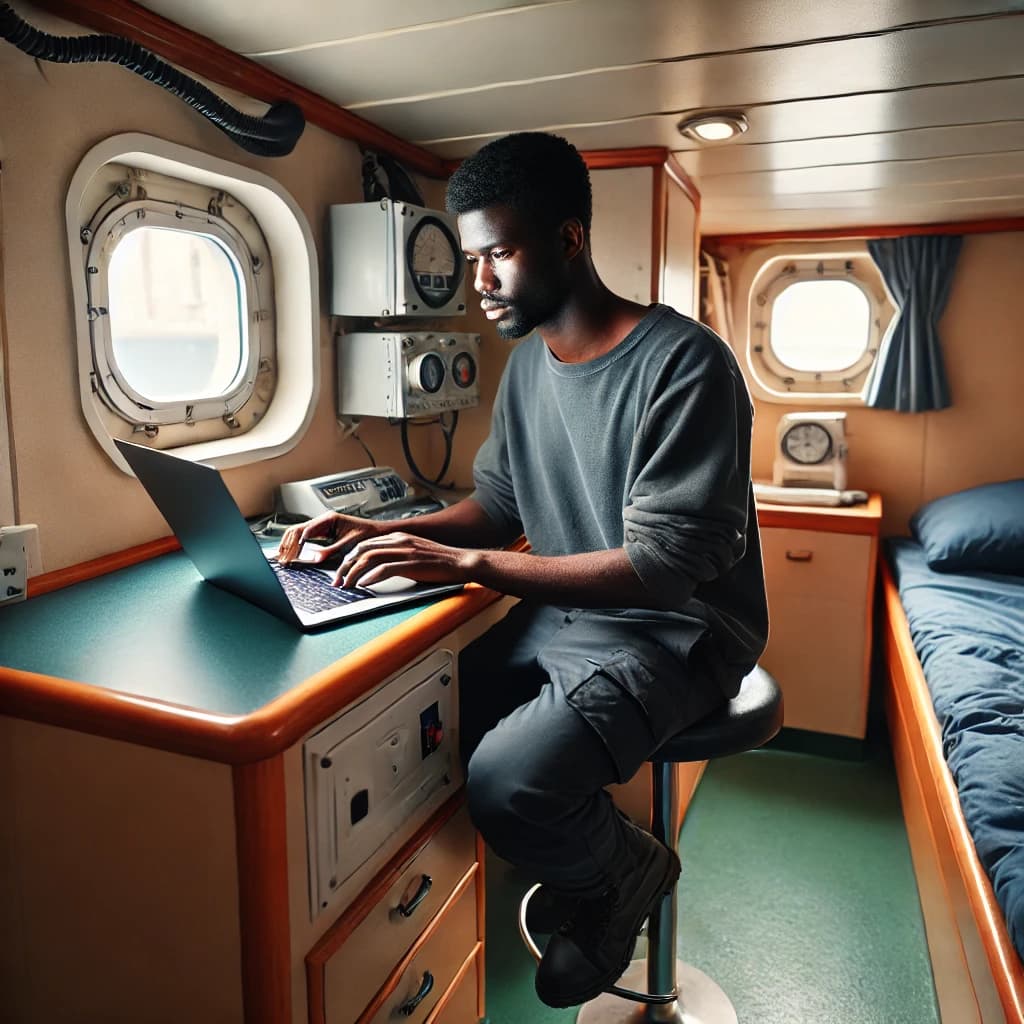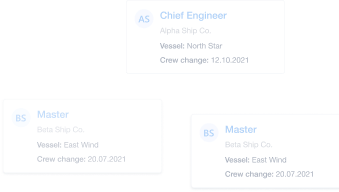10 Tips to Make Sure Meetings with Your Crew are Productive
Aug 27, 2024 · 9 mins read ·
Crew Management
Holding productive meetings onboard a commercial vessel, whether it’s a cargo ship or an oil tanker, is essential for maintaining efficient operations, ensuring safety, and fostering a positive working environment.
Whether the meeting is a general affair, has been called to address safety concerns or another onboard issue, takes the form of training, or is to address recent revision of rules and regulations in the shipping industry, the expectation is that those working in seafarer jobs are kept fully informed of anything they need to know.
Team meetings are an effective way to update and train the crew with new information and senior crew members play a crucial role in this process so whether you’re a Crew Manager reading this or a Chief Officer, we thought we’d take a look at how a company’s senior crew members can hold effective team and safety meetings onboard.
From preparation to feedback: the secret to successful meetings
Even if you need to deal with language barriers among the crew, follow these ten tips for better onboard meetings with your seafarers and make your vessel a safer and more communicative place to live and work.
1. Preparation is key
Effective meetings start long before the actual gathering. Senior crew members must thoroughly prepare by setting clear objectives and developing an agenda.
The agenda should outline the key topics to be discussed, the order in which they will be addressed, and the time allocated to each. Distributing the agenda to participants in advance allows everyone to come prepared, fostering more productive discussions.

Read more: How to Communicate with Your Remote Teams & Offshore Crew
2. Timing and scheduling
Given the demanding schedule of vessel operations, timing is critical. Meetings should be scheduled at a time that is convenient for most crew members, such as after supper or during a designated break period.
Avoid scheduling meetings during peak operational hours or when the crew is likely to be fatigued. A well-timed meeting ensures maximum attendance and engagement.
3. Create a conducive environment
The meeting environment significantly impacts its effectiveness. Choose a quiet, comfortable space with minimal distractions. Ensure that the room is well-lit and that there are enough seats for all participants.
A conducive environment helps maintain focus and encourages active participation.
4. Effective communication
Clear and effective communication is the backbone of a successful meeting - especially in the maritime industry. The ship’s officer in charge should articulate the meeting's purpose and objectives at the outset.
Throughout the meeting, they should speak clearly and concisely, avoiding jargon that might confuse some participants, particularly if the meeting is being held in their second or even third or fourth language. Encourage questions and feedback to ensure that everyone understands the topics being discussed.
5. Interactive and inclusive discussions
An interactive meeting fosters a sense of involvement and collaboration. Senior crew members should encourage participation from all attendees, ensuring that even the quieter, younger or lower ranking members have a chance to voice their opinions.

Use open-ended questions to stimulate discussion and actively listen to the responses. Recognizing and addressing different viewpoints, and even disagreements, promotes a collaborative atmosphere and leads to better decision-making.
6. Stay on track
Keeping the meeting focused on the agenda is crucial. It is easy for discussions to veer off course, especially in a dynamic environment like a ship. Appointing a timekeeper can help ensure that each topic receives the appropriate amount of attention and that the meeting concludes on time.
If discussions start to stray, they should be gently steered back to the main agenda. The duration should also be taken into consideration: not so short that things get swept to one side and not so long that attendees zone out and lose focus.
Read more: Why Great Communication is Essential for Crew Retention
7. Address safety and compliance
Safety should be a standing agenda item in every meeting. Discuss any recent safety incidents, review procedures, and reinforce the importance of compliance with regulations. Highlight any new amendments or circulars and explain their significance.
Encouraging crew members to share their experiences and suggestions regarding safety can lead to valuable insights and improvements.
8. Recognize and motivate
Acknowledging the hard work and achievements of the crew is vital for maintaining morale. Recognize individual and team accomplishments and express appreciation for their efforts. And always address crew members by name - even if they’re the youngest Deck Cadet onboard.

Positive reinforcement motivates the crew and fosters a culture of excellence and teamwork. Recognition also leads to greater crew retention, meaning your company will stand a greater chance of retaining good seafarers for subsequent contracts.
9. Document and follow-up
Documenting the key points discussed during the meeting and the decisions made is essential. This documentation serves as a reference for future meetings and ensures accountability. Distribute the meeting minutes to all participants promptly.
Additionally, follow up on action items and track progress to ensure that decisions are implemented effectively.
10. Continuous improvement
Lastly, seek feedback on the meeting itself. Ask participants for their opinions on what went well and what could be improved. This feedback can be gathered through informal conversations or anonymous surveys.
Continuous improvement of meeting practices ensures that they remain effective and relevant.
What are the five 'P's of a productive meeting?
Finally, whether you’re hosting a meeting onboard a vessel or in your office it’s always handy to keep the five ‘P’s of a productive meeting in the back of your mind.
Don’t know what we’re talking about? These are the five ‘P’s that can mean the difference between a meeting that goes nowhere and makes people yawn, or one that has the desired outcome.
1. Purpose
Definition: Clearly define the purpose of the meeting.
Importance: Knowing the purpose ensures that everyone understands why they are there and what the meeting aims to achieve. This helps keep the discussion focused and relevant.
2. Participants
Definition: Identify who needs to attend the meeting.
Importance: Having the right participants is crucial for a productive meeting. This includes key decision-makers, those who have relevant information, and stakeholders affected by the meeting's outcomes.
3. Preparation
Definition: Ensure that all participants are well-prepared before the meeting.
Importance: Preparation involves distributing the agenda in advance, providing necessary background information, and asking participants to come prepared with any reports or data. Prepared participants can contribute more effectively to the discussion.
4. Process
Definition: Outline the process or structure of the meeting.
Importance: A well-defined process includes setting an agenda, allocating time for each topic, and establishing ground rules for discussion. This keeps the meeting organized and ensures that all necessary points are covered.
5. Product
Definition: Identify the expected outcomes or products of the meeting.
Importance: Knowing the desired product or outcome helps guide the discussion towards actionable results. This could be a decision, a plan, a set of action items, or a report. Clear outcomes ensure that the meeting has tangible results and follow-up actions.

Navigating better crew meetings on your vessel
Successful meetings, whether they’re onboard a cargo ship, a tanker, a bulk carrier or a cruise ship are a product of careful planning, clear communication, and active participation.
Senior crew members have a pivotal role in facilitating these meetings, ensuring that they are productive, inclusive, and focused on safety and operational excellence.
By following these guidelines, the ship’s officers or heads of department can hold meetings that not only address immediate concerns but also contribute to the long-term success and efficiency of the vessel’s operations.

Eve Church
Eve is Martide's content writer, publishing regular posts on everything from our maritime recruitment and crew planning software to life at sea. Eve has been writing professionally for more than two decades, crafting everything from SEO-focused blog posts and website landing pages to magazine articles and corporate whitepapers.
UK



